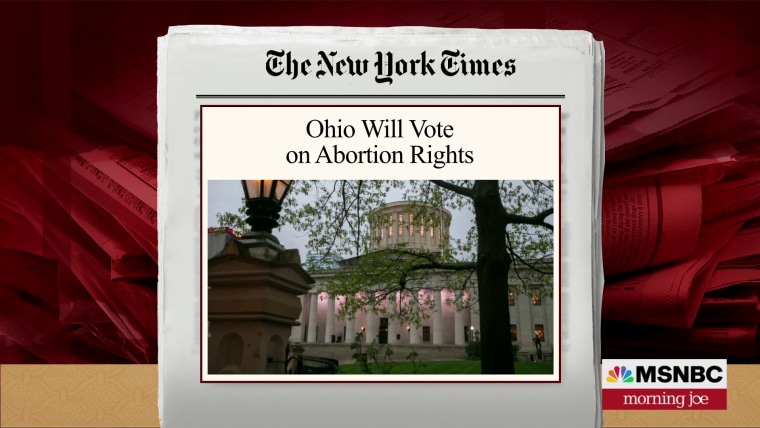UPDATE (Aug. 8, 2023, 9:00 p.m. ET): Ohio voters rejected Issue 1 during Tuesday's special election, AP projects. As a result, the requirements for amending the state’s constitution will not change.
In Tuesday's special election, Ohio voters will determine whether one of the most draconian measures pushed since the rescission of Roe v. Wade goes into law.
The special election isn’t technically about abortion. On its face, the measure before voters — known as Issue 1 — concerns whether the threshold for ballot initiatives to amend the state constitution should be raised to 60%. But Ohio Republicans set up the election only after activists obtained the necessary signatures to place an abortion rights amendment on the ballot in November. Under current law, the amendment would be adopted with a simple majority of the vote.
But with the adoption of Issue 1, groups would have to collect signatures from 5% of registered voters in all of Ohio’s 88 counties, up from the current 44-county requirement. And it would scrap the current 10-day period for groups to collect more signatures if they didn’t initially have enough valid ones.
Ohio Republicans are openly trying to water down their own voters’ ability to amend the state constitution, and the prospect has clearly galvanized Ohioans. Early turnout was sky-high, with the NBC affiliate in Columbus reporting Monday that “nearly 700,000 Ohioans cast their vote early in person or via absentee ballot. Compared to last August, that is nearly seven times higher, and more than three times higher compared to the May 2022 primary.”
Adopting Issue 1 could drastically alter Ohio politics. As Megan Henry wrote for the Ohio Capital Journal: “Since 1913, Ohio has had 227 proposed amendments and 127 of them have passed, but 49 of those approved amendments received less than 60% of votes.”
Ohio Republicans are openly trying to water down their own voters’ ability to amend the state constitution.
Ohio constitutional amendments that wouldn’t have passed under a 60% threshold include one that allows nonwhites to enlist in the Ohio National Guard, one that instituted term limits for governors and one that allowed casinos to open in Columbus, Cleveland, Cincinnati and Toledo.
Issue 1 is widely supported by Republican elites in Ohio, including Gov. Mike DeWine and Secretary of State and current Senate candidate Frank LaRose, as well as both of LaRose’s GOP opponents in the primary. LaRose, who’s seen as the favorite in the primary, reportedly said Monday that the Ohio Constitution has been amended too many times and added: “Issue 1 is our chance to finally do something about it.”
But in the past, LaRose has been more direct about his motives, saying he thinks Issue 1 is entirely about stopping abortion rights from being enshrined into state law. That should give you a sense of the uniform fear that Ohio Republicans have about potential voter backlash to their right-wing agenda.
If you’re wondering, a poll last month found that 58% of Ohio voters support enshrining abortion rights in the state constitution.
Just shy of the 60% threshold that Republicans want to institute.



